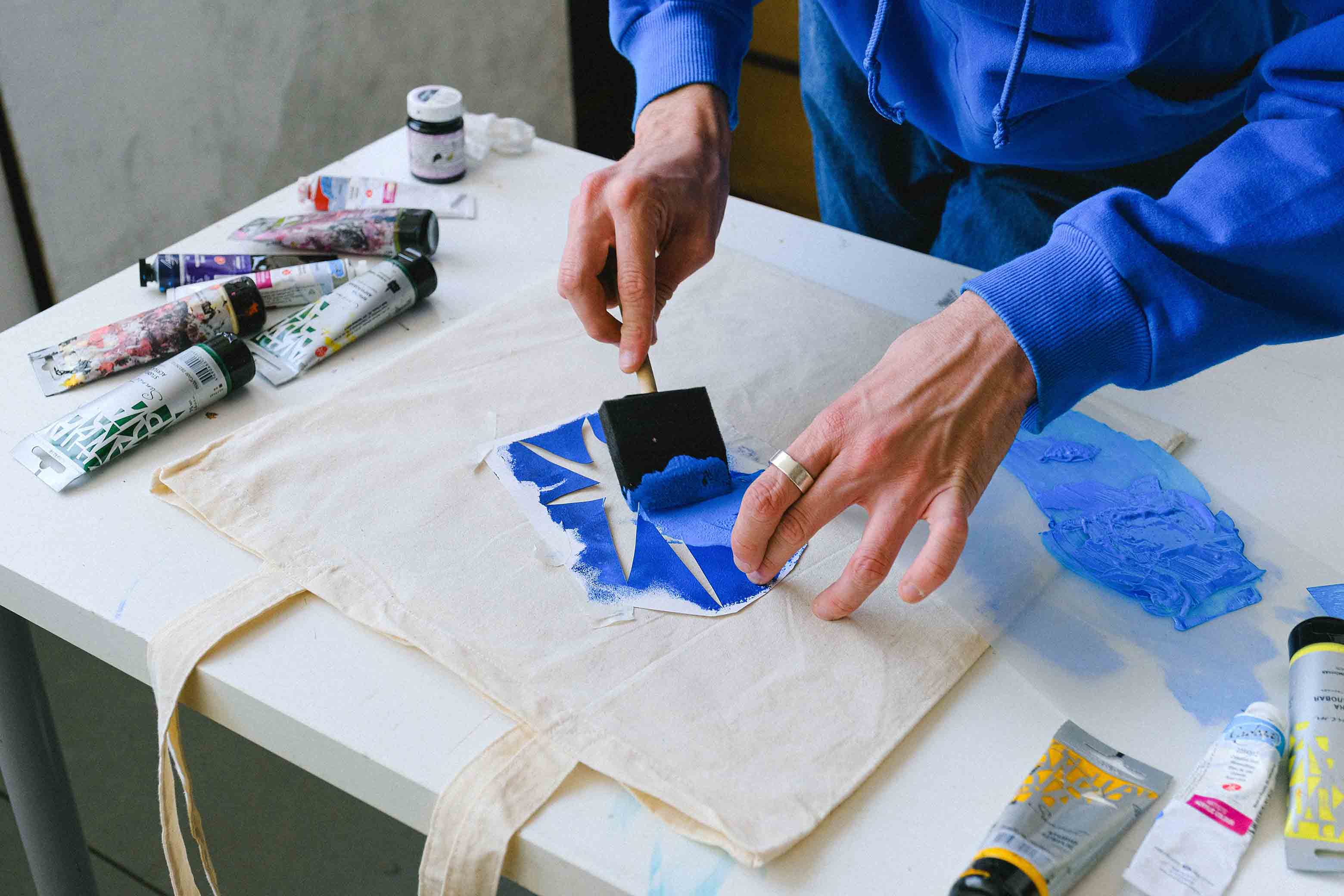Transfer Printing 101
| Jul, 15 , 22
How did the transfer printing start?
Reasons for using transfer printing
Advantages of transfer printing
- It is easy to design and store when printed on paper.
- The method is relatively cost-efficient when compared with other techniques like DTG.
- It has a fast turnaround time for small orders.
- The skill required is less, and the rejection rate is low.
- Some special effects and textures are limited to this method.
- It is easier to print complex designs with lots of details.
- Since it provides a fast turnaround time, the storage cost is low.
- You can get various effects and textures like fluorescent, metallics, velvet, etc.
- It is suitable for full colors and vivid printing.
- The process can provide high-quality complex graphics like gradients with unlimited options.
Disadvantages of transfer printing
- The process is helpful for smaller quantities than other methods like screen printing - 100 units per order - and DTG printing - 50 to 250 units per order.
- The technique pales in comparison to printing on various materials like screen printing.
- Each design needs to be cut individually.
- Direct ironing and printing can damage the image quality.
Transfer printing working
- Inks - also known as microdevices - are prepared on the donor substrate using wet chemical or dry etching and released in an orderly manner.
- The ink is retrieved from the donor substrate using an elastomeric stamp. A proper preload is applied to the stamp to ensure consistent contact between the ink and stamp, making it adhesive to retrieve inks from the donor correctly. The method can be selective and non-selective depending upon precise manipulation of the inks and high throughput.
- The ink stamp is then printed onto the receiver substrate, and its removal completes the process.
Types of transfer printing
- The plastisol printing process is named after the ink used for printing. It is a beautiful choice for an organization's logo, texts, labels, and design with fine details, and color vibrancy is a priority. People confuse it with screen-printing because it is almost the same; the only difference is printing onto transfer paper instead of fabric. The process is similar to the water-based transfer method. However, the ink is PVC free, making it more environmentally friendly.
- Stretch litho is named after lithography and is the latest transfer printing technology in the world of custom merch. The method combines screen and digital printing. Since the printing is done on paper, the process provides more detail than other methods. Paper is smoother than fabric, so the color dots don't bleed as much when it touches the surface compared to cloth.
- Sublimation is suitable for printing on polyester transfers full-colors solutions. The method is also cost-efficient. We have already discussed the ink turning to gas and then joining with the fabric. Therefore, it doesn't add any layer to the material, making it perfect for white or light-colored clothes. The method also works with a variety of hard surfaces with poly-coated layers.The method produces long-lasting, durable images but is limited by materials compatibility, i.e., polyester. You can recognize the print easily with folds or creases remaining white.
- CAD (Computer-Aided Design ) - Cut Vinyl is commonly used for printing numbers, logos, and names, on sports merch, including t-shirts, hoodies, jerseys, socks, etc. The method prints onto vinyl or nylon directly and are suitable for printing up to three colors at once. The process provides a durable gloss and matte finish and prints vivid colors and precise patterns. It is faster and easier with no-set time compared to screen printing.
- Airflow heat transfer material contains small holes in the vinyl, making the fabric breathable and suitable for custom sports merch.
- Thermo film heat transfer material has a semi-gloss finish creating a sharp design. It doesn't absorb dyes from the material - known as dye migration, making it anti-abrasive and strong.
- Fashion-film heat transfer material is suitable for precise design and gives a thin matte-finish look.
- Flock heat transfer material has a unique look and texture and is ideal for layering two colors giving it a suede-like finished look.
Misconceptions about transfer printing
- It looks coarse: In the past, it was true, with most vinyl types looked cheap. However, things have changed, and modern ones provide a high-quality matte finish. It is about knowing the work behind the materials, and you would not want to cover a large area with vinyl because it would make it look rigid.
- The printing cracks: It might happen and depends on the paper quality. There are many high-quality options like Soft stretch, IronAll, etc. They are soft and elastic, taking care of the cracking issue.
- Vinyl doesn't work well with negative spaces: On the contrary, cutting the vinyl to show the fabric color as the background makes it feel less plasticky and stiff.
- It doesn't work on most fabrics: Besides embroidered and fleece clothes, the process is suitable for most materials.
The next step
The EverLighten difference
What is transfer printing?
Transfer printing is a broad term for methods that involve creating a design on a non-textile surface and then transferring it to fabric. It's a versatile and cost-effective option for printing small batches of merch and accessories.
What are the advantages of transfer printing?
- Easy to design and store (designs are printed on paper)
- Relatively inexpensive compared to some other techniques like DTG
- Fast turnaround time for small orders
- Less skill is required, leading to lower rejection rates
- Ability to achieve complex designs and effects (fluorescent, metallics, etc.)
- Suitable for full-color, vivid prints
- Can handle high-quality graphics with gradients
What are the disadvantages of transfer printing?
- Not ideal for large quantities (becomes expensive and time-consuming)
- Limited printability on darker fabrics
- Each design needs individual cutting
- Direct ironing can damage the image
What are the different types of transfer printing?
- Plastisol printing: Great for logos, text, labels, and designs with fine details. Similar to screen printing, but printed on transfer paper first.
- Heat transfer: Uses heat to apply for a vibrant plastisol transfer. Limited to 4 prints at once.
- Stretch litho: Newest transfer printing technology. Combines screen and digital printing for high detail.
- Sublimation: Ideal for full-color prints on polyester fabrics. The ink becomes part of the fabric, creating a long-lasting image. Not suitable for all materials.
- CAD-Cut Vinyl: Commonly used for names, numbers, and logos on sports apparel. Prints up to 3 colors with a durable finish.
Is transfer printing right for me?
Transfer printing is a good choice for creating small batches of custom merch with complex designs. If you need to print on large quantities or darker fabrics, other techniques like screen printing might be better suited.

